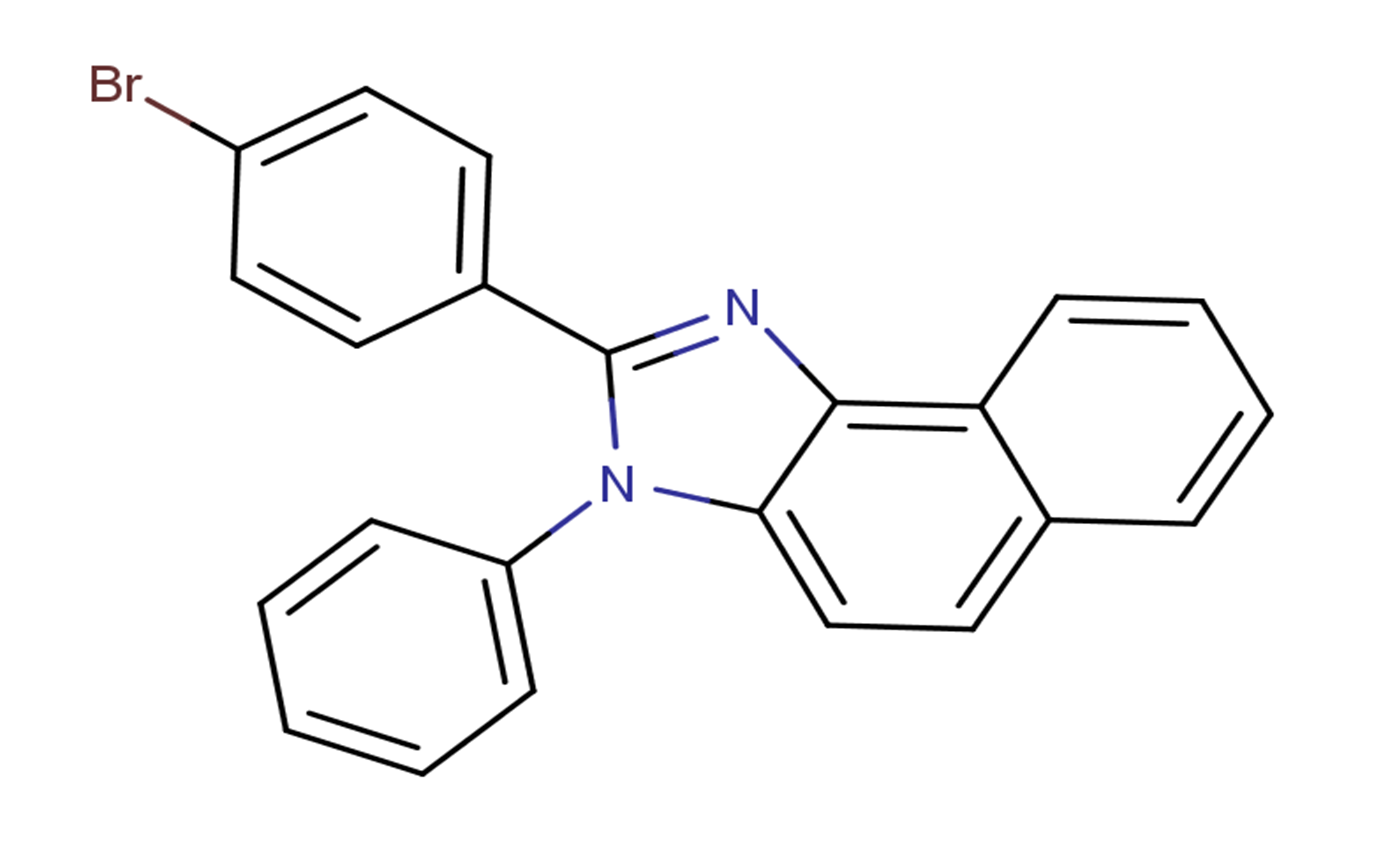
KUN56321
CAS No. 1771756-32-1
KUN56321( 3H-Naphth[1,2-d]imidazole, 2-(4-bromophenyl)-3-phenyl- )
Catalog No. M23792 CAS No. 1771756-32-1
KUN56321 is a luminescent agent.?
Purity : >98% (HPLC)
 COA
COA
 Datasheet
Datasheet
 HNMR
HNMR
 HPLC
HPLC
 MSDS
MSDS
 Handing Instructions
Handing Instructions
| Size | Price / USD | Stock | Quantity |
| 10MG | 45 | In Stock |


|
| 25MG | 61 | In Stock |


|
| 50MG | 80 | In Stock |


|
| 100MG | Get Quote | In Stock |


|
| 200MG | Get Quote | In Stock |


|
| 500MG | Get Quote | In Stock |


|
| 1G | Get Quote | In Stock |


|
Biological Information
-
Product NameKUN56321
-
NoteResearch use only, not for human use.
-
Brief DescriptionKUN56321 is a luminescent agent.?
-
DescriptionKUN56321 is a luminescent agent.?The application of KUN56321 comprises: coating the film of KUN56321 onto hole transport layer or electron transport layer of ITO glass by vacuum evapn.coating the hole transport layer or electron transport layer onto the film by evapn., prepg.?metal electrode by evapn.?KUN56321 showed the capability to improve light emitting efficiency and reducing drive voltage in org.?light- emitting device and display device.
-
In Vitro——
-
In Vivo——
-
Synonyms3H-Naphth[1,2-d]imidazole, 2-(4-bromophenyl)-3-phenyl-
-
PathwayOthers
-
TargetOther Targets
-
RecptorOthers
-
Research Area——
-
Indication——
Chemical Information
-
CAS Number1771756-32-1
-
Formula Weight399.29
-
Molecular FormulaC23H15BrN2
-
Purity>98% (HPLC)
-
SolubilityDMSO:Insoluble;Water:Insoluble
-
SMILESBrC1=CC=C(C2=NC3=C4C=CC=CC4=CC=C3N2C5=CC=CC=C5)C=C1
-
Chemical Name——
Shipping & Storage Information
-
Storage(-20℃)
-
ShippingWith Ice Pack
-
Stability≥ 2 years
Reference
molnova catalog



related products
-
Letosteine
Letosteine (Viscotiol) is an orally active, effective, and safe expectorant that can be used in the study of acute or chronic respiratory diseases, for example, bronchopulmonary disease.
-
EVP-6124 hydrochlori...
EVP-6124 hydrochloride is a new-type partial agonist of α7 neuronal nicotinic acetylcholine receptors (nAChRs).
-
Angelol M
Angelol M shows activity in inhibiting prostate specific antigen (PSA) secreted from androgen dependent prostate cancer cell line, LNCaP cells.



 Cart
Cart
 sales@molnova.com
sales@molnova.com


